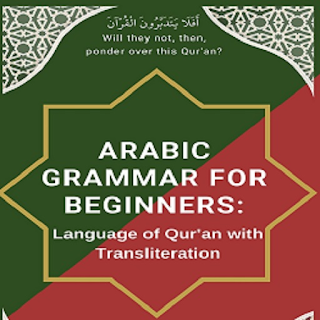Nahw Meer English: 6.5/6.6/6.7 - Visible/Invisible Actors/Passive/Transitive - الْمُتَعَدِّيُ/الْمَجْهُوْلُ/ اَلْفَاعِلُ ظَّاهِرًاوَمُسْتَتِرًا
Section 6.5 – Visible/Invisible Actors فَصْلٌ ٦. ٥ اَلْفَاعِلُ ظَّاهِرًاوَمُسْتَتِرًا |
An actor فَاعِلٌ is of two kinds: Visible/Present ظَاهِرٌas in ضَرَبَ زَيْدٌmeaning “Zaid hit” or Visible/Pronoun ضَمِيْرٌ بَارِزٌ as in ضَرَبْتُ meaning “I hit”, or Unseen/Invisible Pronoun ضَمَيْرٌ مُسْتَتِرٌas in [1]زَيْدٌ ضَرَبَ meaning “Zaid, he hit”. The actor فَاعِلٌin act ضَرَبَ is the word "هُوَ” meaning “he” is Unseen/Invisible in ضَرَبَ.
If the actor فَاعِلٌ is a True Feminine Gender مُؤَنَّثٌ حَقِيْقِيٌّas in قَامَتْ هِنْدٌmeaning “Hind stood up”, or is a Feminine Pronoun ضَمِيْرًا مُؤَنَّثًا, then signs of female gender must be present in the act فِعْلٌ. For example, هِنْدٌ قَامَتْmeaning “Hind, she stood up”, and female Pronoun هِيَ is hidden in قَامَتْ.
When the actor فَاعِلٌ is مُوْنَّثًا غَيْر حَقِيْقِيًا ظَاهِرًاthe visible figurative female gender, or a visible broken plural
ظَاهِرًا الْتَكْسِيْرِ جَمْعُ male or female, both of the methods may be applied[2]. For example, طَلَعَ الشَّمْسُor طَلَعَتِ الشَّمْسُboth meaning “the sun rose” and قَالَ الرِّجَالُ or قَالَتِ الرِّجَالُ both meaning “men said”.
Second Kind – Passive Voice اَلْقِسمُ الثَّانِيْ - اَلْفِعْلُ الْمَجْهُوْلُ:
Section 6.6 – Passive Voice Verb فَصْلٌ ٦. ٦ – اَلْفِعْلُ الْمَجْهُوْلُ |
The Passive Voice Verb [3] اَلْفِعلُ الْمَجْهُوْلُ gives the Nominative رَفْعٌ status to the Object بِهٖ اَلْمَفْعُوْلُ in place of the actor فَاعِلٌ also called the surrogate actor الْفَاعِلِ نَائِبُ. The Passive Voice Verb also gives Accusative نَصْبٌ status to the remaining Objects مَفْعُوْلٌ. For example,
وَالْخَشَبَةَ تَأَدِيْبًا دَارِہِ فِي شدِيْدًا ضَرْبًا الْأَمِيْرِ أَمَامَ الْجُمُعَةِ يَوْمَ زَيْدٌ ضُرِبَ [4]
meaning “Zaid was beaten on Friday in front of the Ameer, severely, in the house, to teach him respect, with a stick”. This is a Verb for which the actor فَاعِلٌ is not known or mentioned, and itsNominative رَفْعٌ is called the Object مَفْعُوْلٌ for which actor فَاعِلٌ is unknown or unmentioned and is given the name Surrogate Actor
الْفَاعِلِ نَائِبُ.
Section 6.7 – Transitive Verbفَصْلٌ ٦. ٧ – فِعْلُ الْمُتَعَدِّيُ |
The Transitive Verb اَلْفِعْلُ الْمُتَعَدِّيُ is of four kinds:
1)Transitive towards a single Object مَفْعُوْلٌ: As in
ضَرَبَ زَيْدٌ عَمْرًوا meaning “Zaid hit Amr”.
2)Transitive towards two Objects مَفَاعِيْلٌ: with allowance to depend on a single Object مَفْعُوْلٌ when the second object is obvious, as in أَعْطَيْتُ زَيْدًا دِرْهَمًا meaning “I gave Zaid a dirham”. If it is said
أَعْطَيْتُ زَيْدًا, it is allowed also if it is obvious that a dirham is being given.
3)Transitive towards two Objects مَفَاعِيْلٌ in a situation where it is not allowed or appropriate for the Verb to depend on a single Object مَفْعُوْلٌ. These are called Verbs that are non-physical (associated with the senses) أَفْعَالُ الْقُلُوْبِ as in
عَلِمْتُ meaning “I learned”
ظَنَنْتُ meaning “I suspected, I thought”
حَسِبْتُ meaning “I presumed, I figured”
خِلْتُ meaning “I pretended”
زَعَمْتُ meaning “I claimed”
رَأَيْتُ meaning “I saw/I dreamt”
وَجَدْتُّ meaning “I felt/ I found”
As in عَلِمْتُ زَيْدًا فَاضِلًا meaning “I learned that Zaid is a learned man”, and ظَنَنْتُ زَيْدًا عَالِمًا meaning “I thought Zaid is a scholar”.
4)Transitive towards three Objects مَفَاعِيْلٌ: See the table below for examples:
Table 12 - – Three Object (مَفَاعِيْلٌ) Examples
| أَعْلَمَ | he knew |
| أَرَىٰ | he saw |
| أَنْبَأَ | he gave news |
| أَخْبَرَ | he informed |
| خَبَّرَ | he informed gradually |
| نَبَّأَ | he gave news gradually |
| حَدَّثَ | he spoke over a period |
Example: أَعْلَمَ اللهُ زَيْدًا عَمْرًوا فَاضِلًا meaning “Allah gave knowledge to Zaid that Amr is a learned man”.
These Objects مَفَاعِيْلٌ in 1 through 4 above are counted as Objects of Verb اَلْمَفْعُوْلُ بِهٖ. The Object in number 3, the second مَفْعُوْلٌ is from group/scale عَلِمْتُand in number 4, the third Object مَفْعُوْلٌ is from the group/scale أَعْلَمْتُ and similarly for اَلْمَفْعُوْلُ لهٗ and اَلْمَفْعُوْلُ مَعْهٗ. These Objects cannot be used in place of a surrogate actor نَائِبُ الْفَاعِلِ in Passive Voice Verb اَلْفِعْلُ الْمَجْهُوْلُ.
Other than these objects in 1-4, It is allowed for the remaining Objects مَفَاعِيْلٌ to be surrogate actors نَائِبُ الْفَاعِلِ.
For Objects مَفَاعِيْلٌ from group/scale أَعْطَيْتُ (example of أَعْطَيْتُ زَيْدًا دِرْهَمًا given before), first Object مَفْعُوْلٌ is more fit that it be made surrogate actor نَائِبُ الْفَاعِلِ instead of second Object مَفْعُوْلٌ. Then you might say that زَيْدٌ أُعْطِيَ is better than saying أُعْطِيَ دِرْهَمًا.
[1] زَيْدٌ is Subject اَلْمُبْتَدَأُ and ضَرَبَ is past tense Verb and actor فَاعِلٌ is the hidden Pronoun in it. Its hidden هُوَ, that is هُوَ in ضَرَبَ, and the sentence is in Nominative status and is Predicate اَلْخَبَرُ for Zaid.[2] Meaning when actor فَاعِلٌ is a Visible Noun اِسْمٌ ظَاهِرٌ (that is non-Pronoun), and is figurative female gender مُوْنَّثًا غَيْرَ حَقِيْقِيًاor is Visible/Present Noun ظَاهِرٌ اِسْمُ which also has the same scale as for a broken plural, it is allowed to use both masculine or feminine Verb as you could see from the examples given above.
[3] That is, passive voice Inflexible Verb اَلْفِعْلُ الْمَجْهُوْلُ. And it does not demand an actor فَاعِلٌ but a Nominative status is given to the Object بِهٖ اَلمَفْعُوْلُ in place of actor فَاعِلٌ, and Accusative status is given to other Accusatives depending on their situation.
[4] ضُرِبَ here is passive Verb فِعلٌ مَاضِيٌ مَبْنِيٌّ لِلْمَجْهُوْلِ and “زَيْدٌ” is surrogate actor نَائِبُ الْفَاعِلِ Nominative by Dammah, “يَوْمَ الْجُمُعَةِ” isظَرْفُ زَمَانٍ , “أَمَامَ الْأَمِيْرِ” is ظَرْفُ مَكَانٍ , “ضَربًا” is
اَلْمَفْعُوْلُ الْمُطْلَقُ, “تَأدِيْبًا” is اَلْمَفْعُوْلُ لِأَجْلِهِ, and “وَالْخَشَبَةَ “ is اَلْمَفْعُوْلُ مَعْهُ meaning مَعَ الْخَشْبَةِ.





Comments